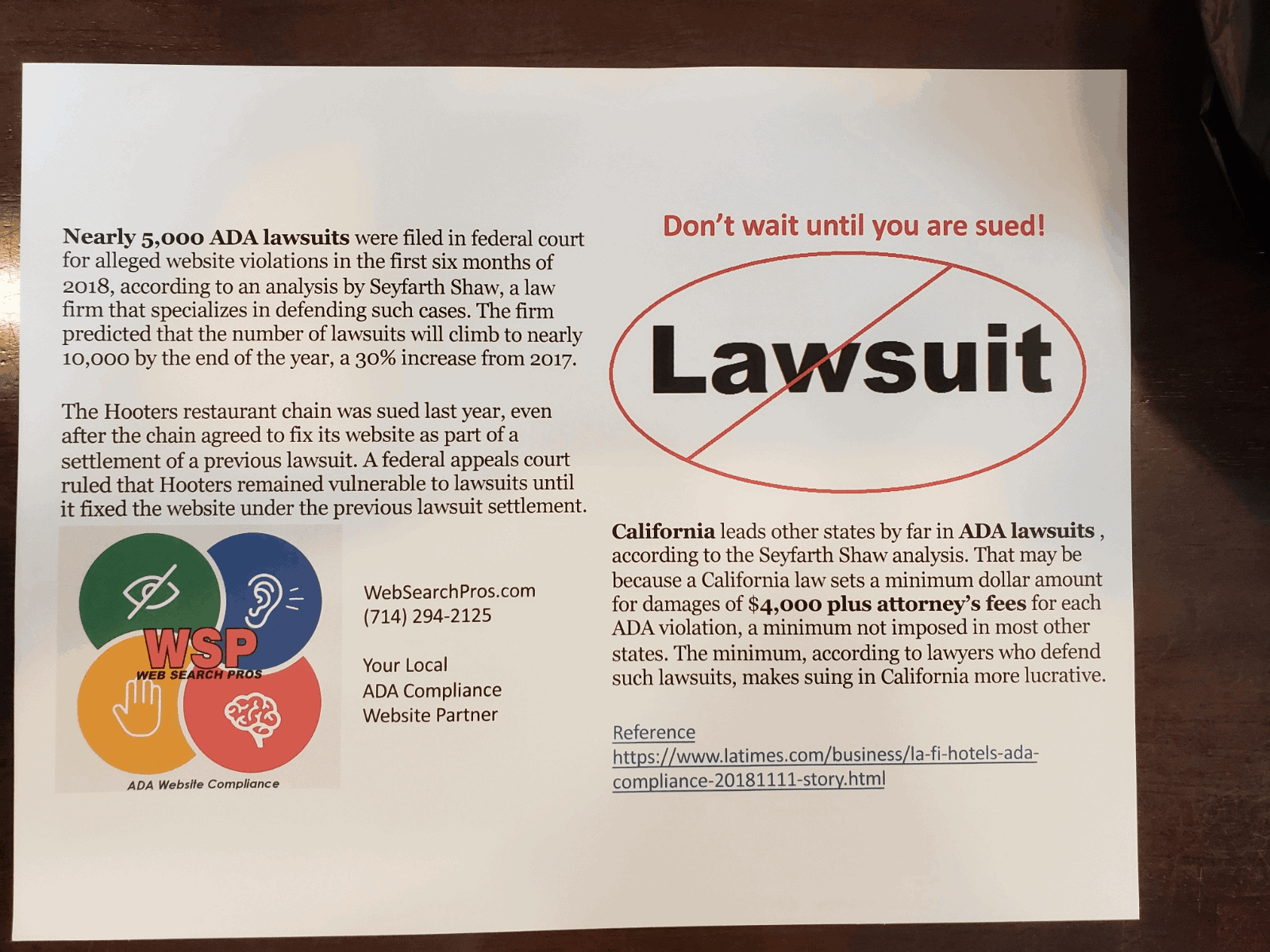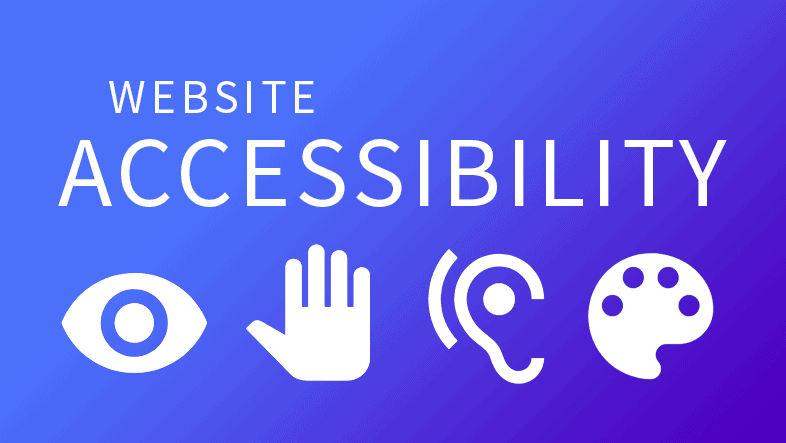ADA Compliance Website Guidelines
(For 2019 And Beyond)
Many website owners are finding themselves battling accessibility lawsuits. 2018 was a record year for number of lawsuits filed for ADA website compliance issues, and 2019 is already on track to break that record. So how do you know if you have an ADA compliant website? How can you protect yourself from a website ADA compliance lawsuit? Keep reading to find out more.
Disclaimer: This material does not constitute legal or professional advice. Always consult a qualified lawyer on any specific legal problem or matter. epicShops disclaims any liability with respect to this information.
What Is Website ADA Compliance?
1990 was the year the Americans with Disabilities Act was instituted, in an effort to end discrimination based on differing abilities. This act was responsible for ensuring that organizations provide reasonable accommodations for people with disabilities.
The first web accessibility guideline was released in 1995, which quickly led to the official release of the first Web Content Accessibility Guidelines in 1998. Fast forward twenty years to 2018, WCAG 2.1 became a W3C (World Wide Web Consortium) recommendation initiated with the goal to improve accessibility guidance for three major groups: users with cognitive or learning disabilities, users with low vision, and users with disabilities on mobile devices. It is now expected that all websites comply with these guidelines in order to provide equal access to all web users.

The WCAG 2.1 breaks down the guidelines into four basic principles. All web content must be:
1. Perceivable
2. Operable
3. Understandable
4. Robust
Each of these principles has at multiple sub-groups with detailed instructions on exact requirements for meeting these qualifications. For the full WCAG 2.1 document, click here.

Why Is It Important To Have An ADA Compliant Website?
The ADA’s relationship with websites has been complicated, and often confusing. It does not explicitly address online compliance, and it is up to individual courts to determine how ADA standards apply to websites, or whether they do at all. The WCAG regulations are considered “recommendations”, but if your websites does not comply with those recommendations, you may be in breach of the Americans with Disabilities Act. It is up to the courts to decide.
So how does this affect you and your website? Unfortunately, many online retailers and site owners are finding themselves battling accessibility lawsuits. 2018 was a record year for number of lawsuits filed for ADA website compliance issues, and 2019 is already on track to break that record. Settlements on ADA website compliance can range from $5,000 to $50,000. The best course of action is to beat that potential lawsuit to the punch, and make your site ADA accessible NOW.
How To Make An ADA Compliant Website
One of the most common complaints listed in in demand letters and lawsuits is alt text. This basically means changing the value of your alt tags to convey what an image represents.
The second most common complaint is closed captioning on video content.
Right away there are two easy fixes that can get you one (big) step closer to being ADA compliant.
Never forget that making your following website ADA compliance recommendations is a process. It will take time and energy to make sure your site meets all four principles of the WCAG.
That’s where we come in.
Overwhelmed? We Can Help.
We understand that this probably feels a little overwhelming. It’s a lot of information to process, and will definitely take a lot of your time and energy. As a business owner, you probably have more than enough on your plate as it is. But that’s where we can help.
There are a lot of companies out there that will audit your website for ADA website compliance, but few of them actually fix your site, they just tell you what’s wrong. At Epic, we partner with BigCommerce, who provide storefronts which give merchants the capability of creating a WCAG-compliant site on their own, or with third-party support. We have also connected with a few agencies that can help ensure that you have an ADA compliant website but not only scanning your website for ADA compliance, but can also fix the issues they find as a result. We also specialize in building premium websites that not only fulfill your SEO and CRO needs (we’re here to help you make money!), but also follow ADA compliance recommendations, and potentially save you thousands of dollars on an accessibility lawsuit.
Don’t wait for them to find you! Contact us today to get more information or schedule a demo on our fully loaded, ADA compliant websites.










